SOLD Antique/Vintage Small Rug w/Double Dorje China (3372)
Original price was: $375.00.$285.00Current price is: $285.00.25″ Square
This vibrant carpet can be used as aid for meditation to sit on or hung on a wall.
Showing 145–156 of 200 results
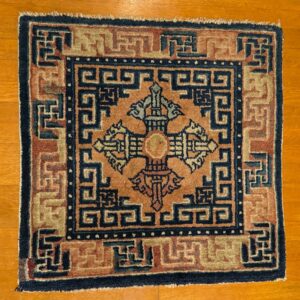

This vibrant carpet can be used as aid for meditation to sit on or hung on a wall.
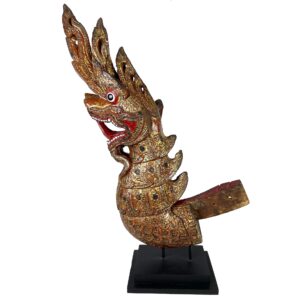
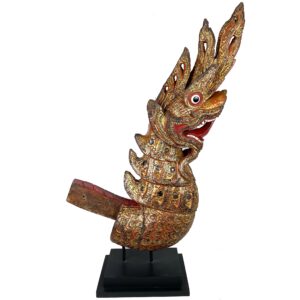
This exceptional naga was one of two that comprised a gong stand. Gongs were used in Burma for both ceremonial and musical purposes in religious, state, or secular settings. A protection figure, this naga is a superb carving elaborately decorated with gold lacquer and pigmentation. He opens his mouth wide bearing mother-of-pearl teeth and a curled blood red mouth and tongue to drive away malevolent spirits, also reinforced by the large glaring eyes circled in red. On first glance it is menacing, but its history as a protector of Buddha Shakyamuni make it prized as a fanciful, gleeful guardian. His scales are arched relief designs of mixed lacquer and ash and they are highlighted with inset cut mirrors and green sequin-like glass “jewels.” It is mounted on a museum quality stand and is in excellent condition for its age and use despite missing an ear.
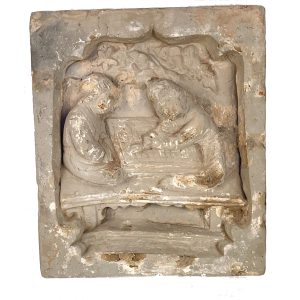

H: 11” W: 9.5” D: 2” | SOLD
As part of the The Song dynasty cultural expansion, government and public buildings and tombs were built with interior walls decorated with earthenware unglazed mold-made brick tiles. This fanciful vibrant tile with a scalloped frame portrays two people playing a board game called wéiqí which originated in China over 2500 years ago. It is the world’s oldest and most complex board game still played.
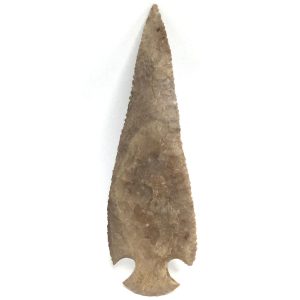

Ancient spearpoints with this triangular blade called triangular lanceolate projectile spear point were found under multiple feet of sediment about 40 miles from Austin, Texas are revising ancient American history as they are believed to be the oldest weapons ever found in North America. Considerably older than those made by the Paleoamerican Clovis culture, formerly…
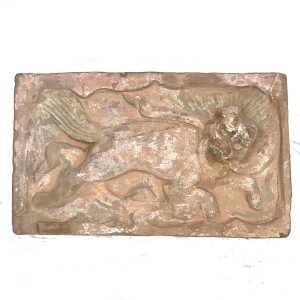
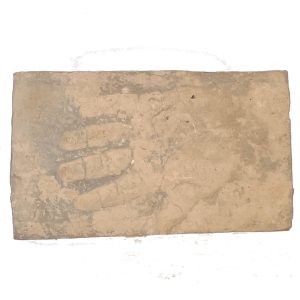
The Song dynasty (960–1279) is considered the most culturally brilliant era in later imperial Chinese history. A massive expansion during this dynasty produced government, public and religious buildings and tombs with walls decorated with earthenware unglazed mold-made brick tiles. Some were purely decorative and others were wishes for happiness and comfort in the deceased’s afterlife…
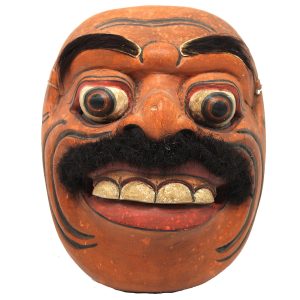

Most jauk keras (strong, scary) masks of a giant are often red or orange to reinforce a volatile dance with jerky movements. This jauk manis (good, sweet) mask dance is a more controlled, regulated and enacted with more calm and human movements.
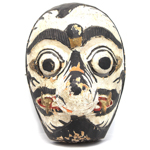
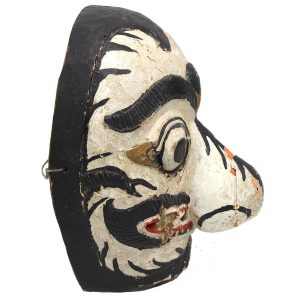
Influenced by Islam for centuries, Javanese theater in Indonesia is stylized, didactic and full of central characters said to be cultural and historic icons of morality. Mask drama theater (Topeng Wayang) in Java is dominated by the conservative central Javanese palace courts (kraton) of Surakarta, Solo and Jogjakarta (Yogyakarta) which have long supported mask makers,…
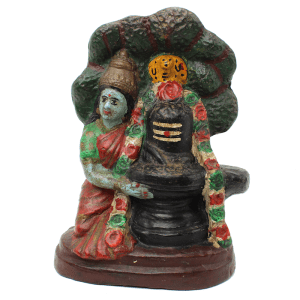
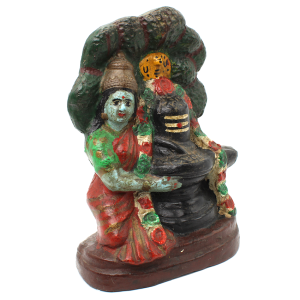
This colorful terracotta image of Shiva and Parvati is aniconic (symbolic) and figurative. Shiva’s is a symbolic lingham (phallus) and Parvati a deity. Together they represent the union of masculine and feminine, thus all existence

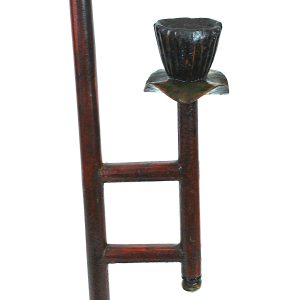
This charming oil lamp is decorated with auspicious symbols: Fish symbolize harmony, marital happiness and double fish mean “may there be abundance.” The oil cup is a lotus seed with a lotus leaf, symbols of a harmonious and fruitful marriage and also mean “the continuous birth of sons.”
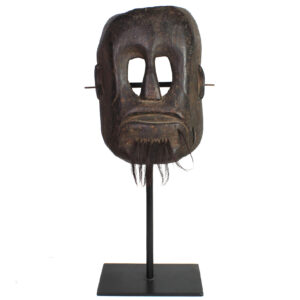
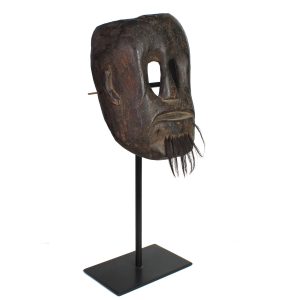
Rare Timor ancestor mask for ritual offerings to honor the departed and provide space during village visits, repel evil spirits. Featured in 2002 Spiderman movie in collection of the Green Goblin.
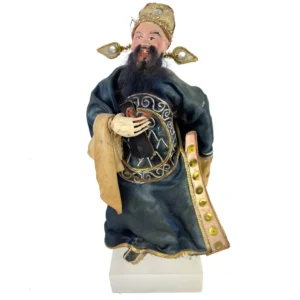
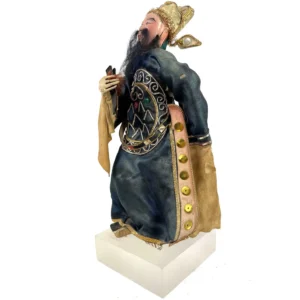
Colorful bearded official/entertainer doll with traditional hat, dark blue and gold robe holding paper clappers castanets. Mounted on lucite.
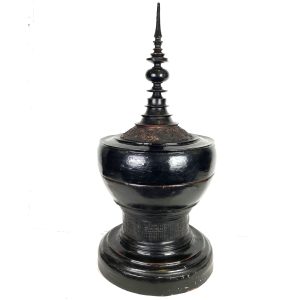
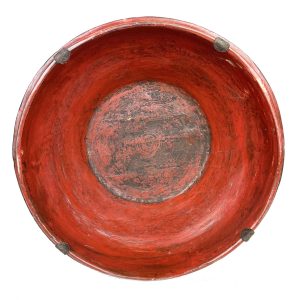
Artfully shaped lacquered Hsun Ok for offerings to monks lid with a finial symbolizing a Buddhist stupa and applied mythical animals and floral decorations. Early 20th century pieces with these special details are harder to find and copies abound.
End of content
End of content